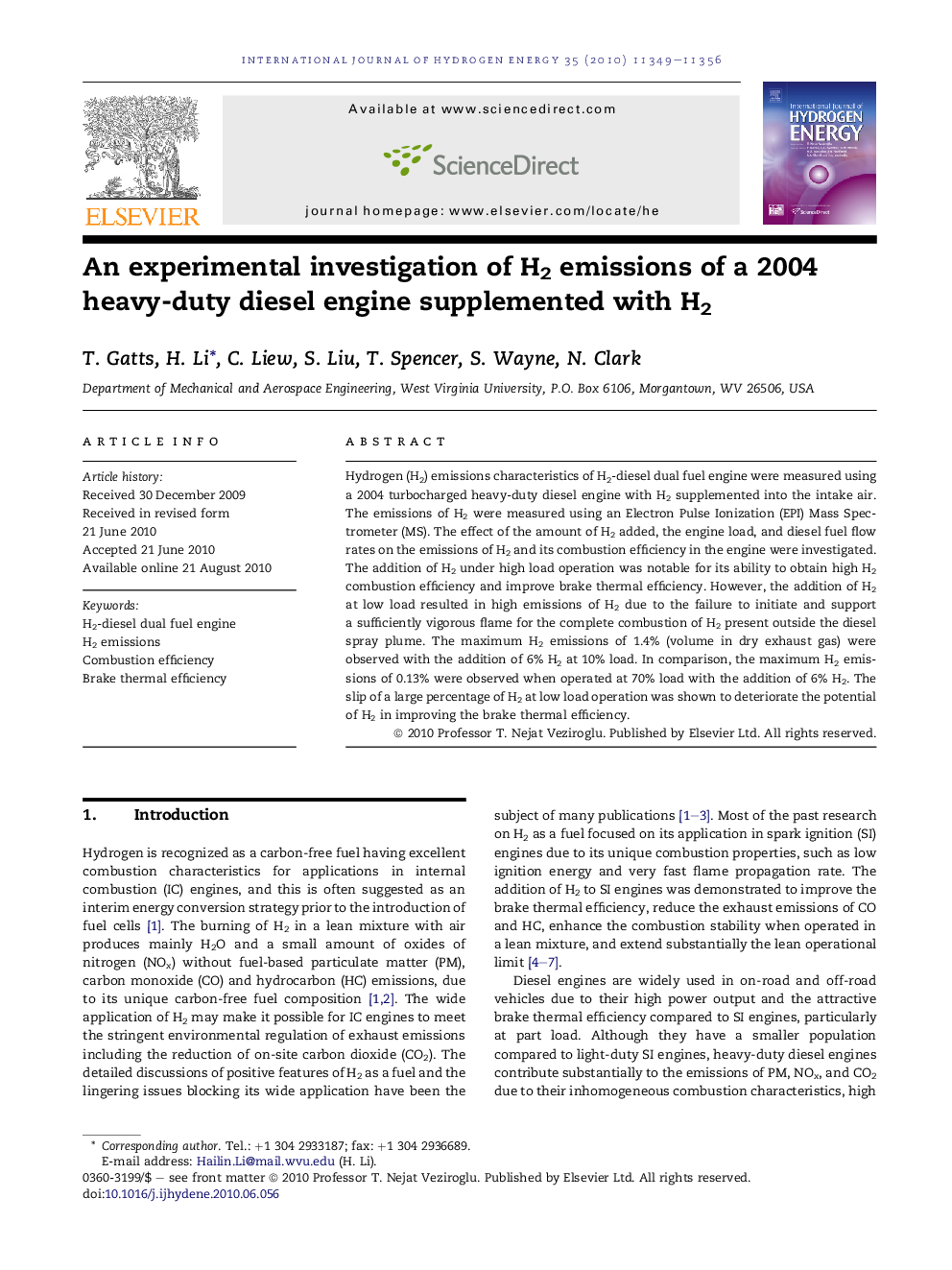| Article ID | Journal | Published Year | Pages | File Type |
|---|---|---|---|---|
| 1276735 | International Journal of Hydrogen Energy | 2010 | 8 Pages |
Hydrogen (H2) emissions characteristics of H2-diesel dual fuel engine were measured using a 2004 turbocharged heavy-duty diesel engine with H2 supplemented into the intake air. The emissions of H2 were measured using an Electron Pulse Ionization (EPI) Mass Spectrometer (MS). The effect of the amount of H2 added, the engine load, and diesel fuel flow rates on the emissions of H2 and its combustion efficiency in the engine were investigated.The addition of H2 under high load operation was notable for its ability to obtain high H2 combustion efficiency and improve brake thermal efficiency. However, the addition of H2 at low load resulted in high emissions of H2 due to the failure to initiate and support a sufficiently vigorous flame for the complete combustion of H2 present outside the diesel spray plume. The maximum H2 emissions of 1.4% (volume in dry exhaust gas) were observed with the addition of 6% H2 at 10% load. In comparison, the maximum H2 emissions of 0.13% were observed when operated at 70% load with the addition of 6% H2. The slip of a large percentage of H2 at low load operation was shown to deteriorate the potential of H2 in improving the brake thermal efficiency.
